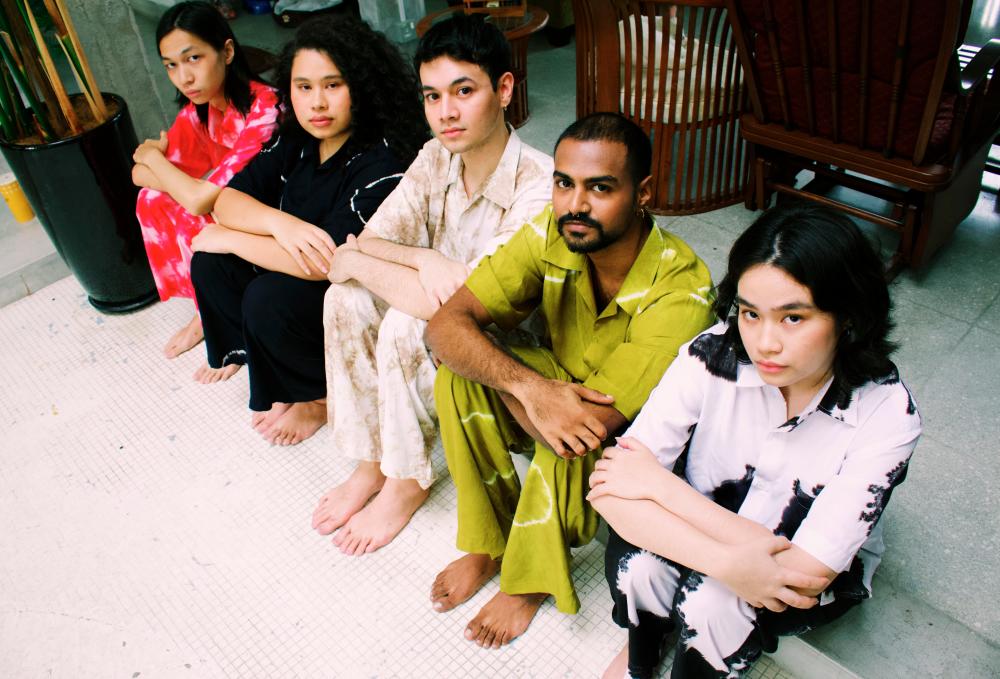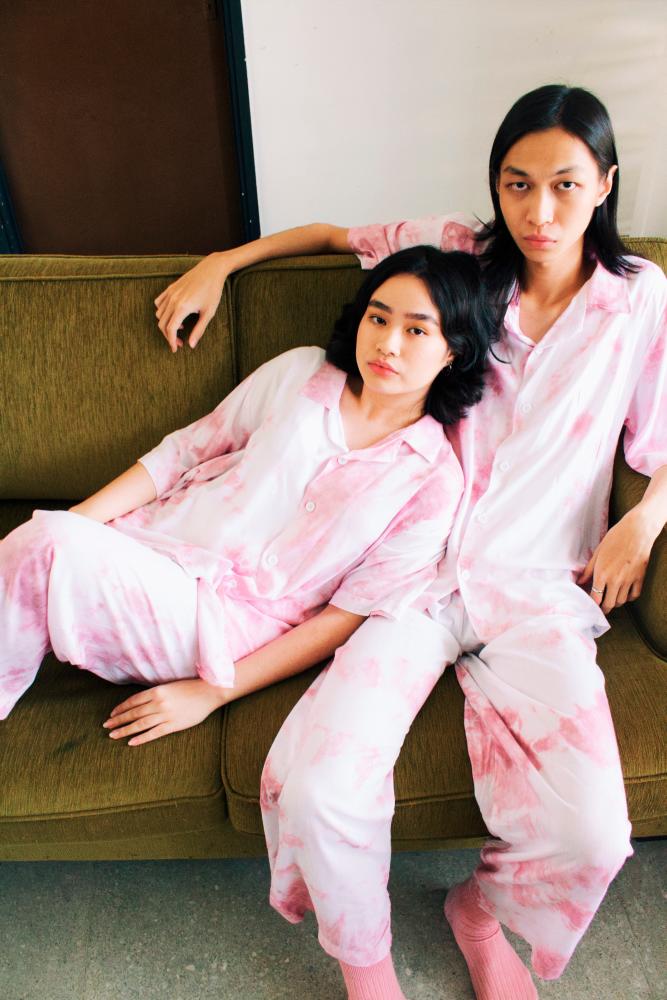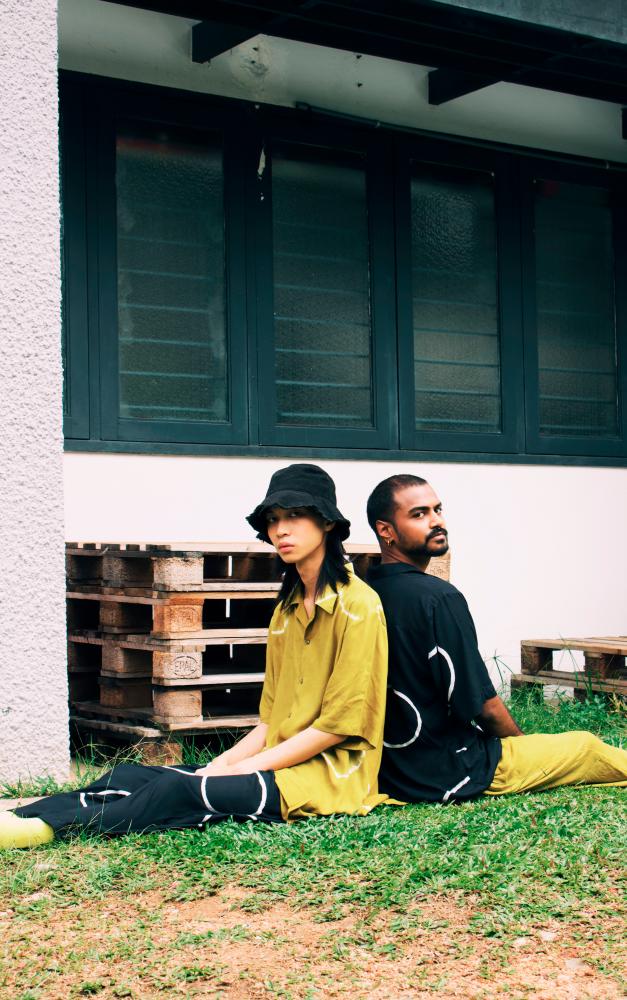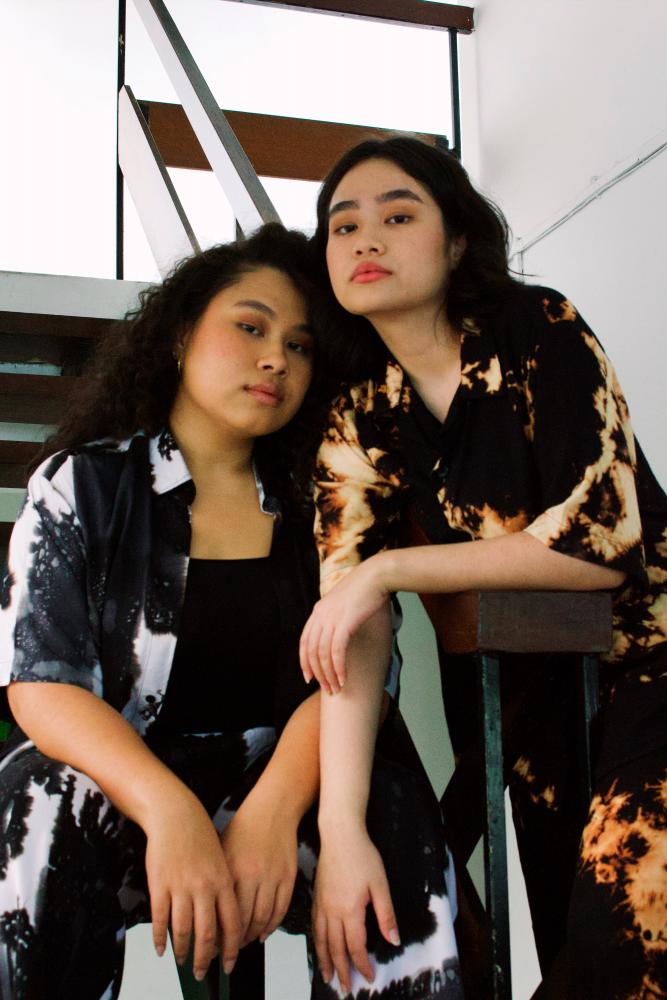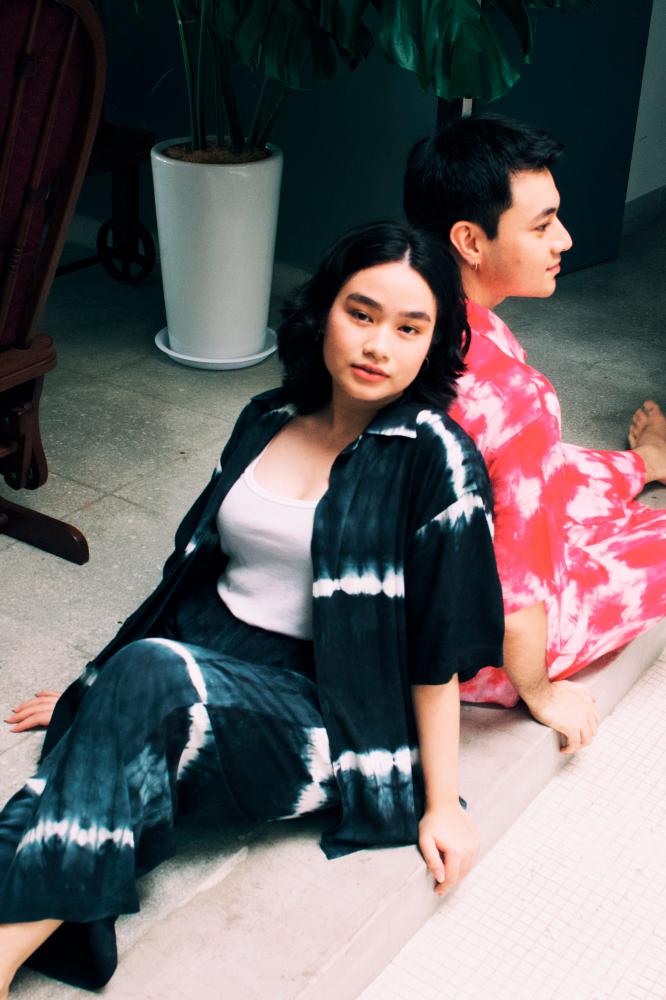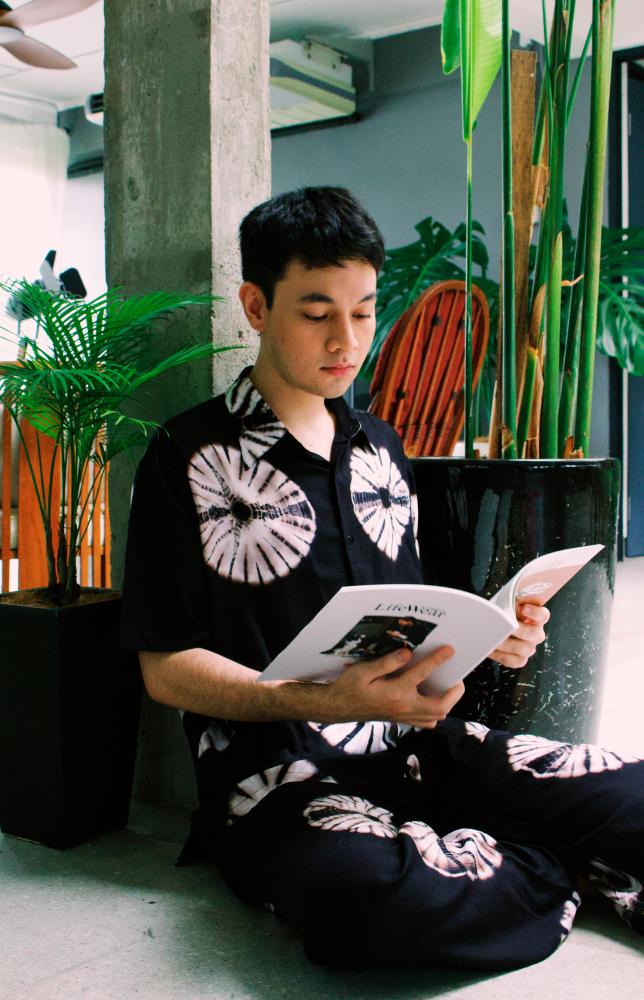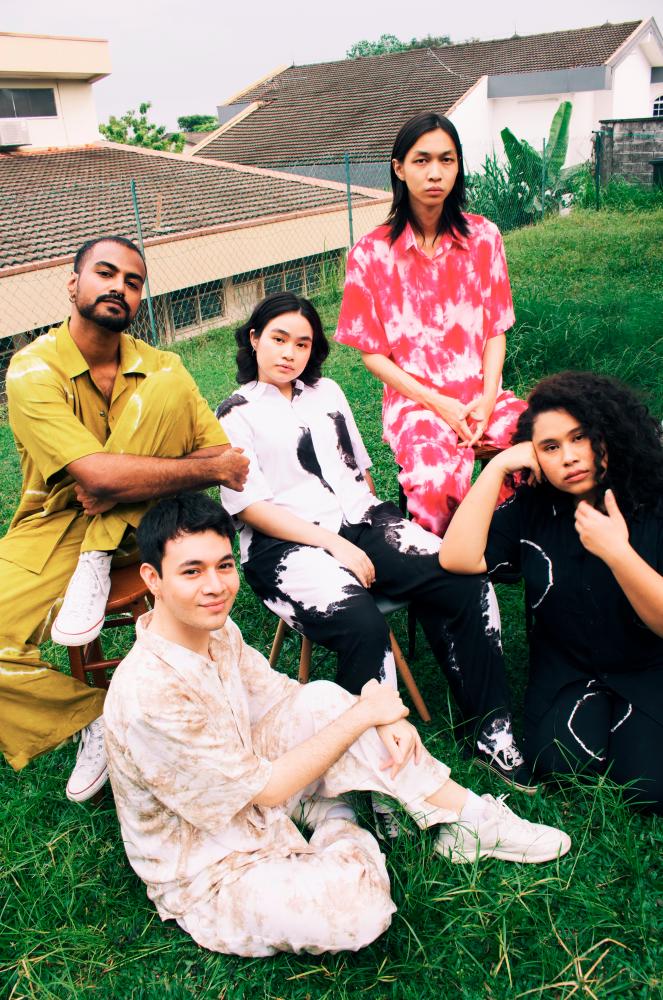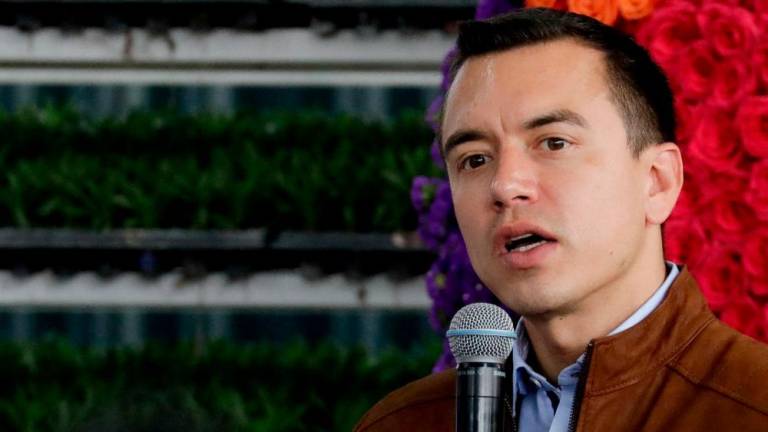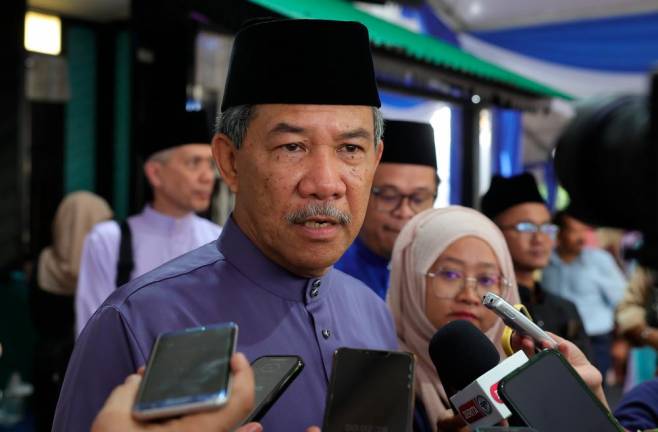EVER-SO-NONCHALANT fashion brand Duduk is building its name on prevalent tie-dye motifs with its carefree days loungewear.
Our modern understanding of tie-dye has often been identified as a counterculture mainstay – an enduring symbol of psychedelia that celebrates the freedom of expression and individuality while foregrounding a DIY and homemade aesthetic that is synonymous with the anti-fashion movement.
But it is not the 1960s Americana movement popularised through hippie culture and filled to the brim with rainbow swirls that Duduk is about, it is the Japanese Shibori dyeing technique that Duduk found itself leaning towards.
Duduk founder Fariq Aniq explains: “When producing Duduk loungewear pieces, I always do my best to pay heed and respect this traditional technique, in maintaining its integrity while sensibly interpreting it through various textiles and colours.
“This, in my opinion, is what truly sets the look of our tie-dye on the opposite end of the spectrum from the psychedelic print, notably through the use of our colours and also the overall aesthetic and even the finishing of each design.”
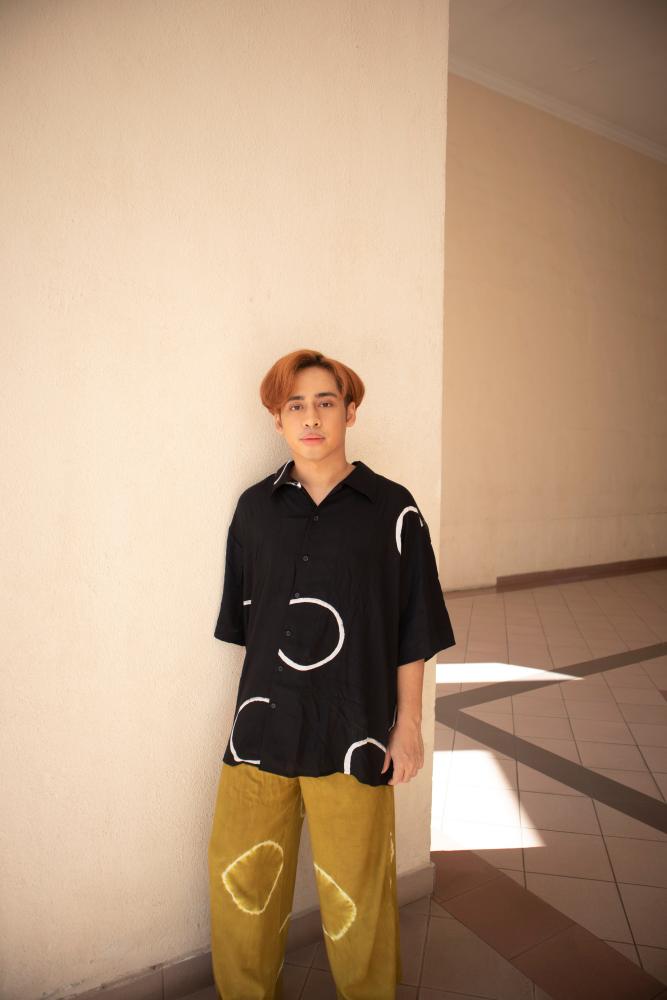
How did the brand begin?
Duduk was largely inspired by my circle of friends. We have this running joke among us that all we do is duduk-duduk (sit) and talk. That same joke manifested in me, thinking that I’d really love to create a brand that is as nonchalant as our joke, a brand with casual loungewear that would allow us to lepak (chill) comfortably for hours on end, yet still look stylish wearing them.
Residing in the Duduk community, I envision people or in this case, the ‘penduduks’ who wear Duduk pieces are able to go about their daily lives from the bed to brunch, to the beach and back home, all without having or wanting to do an outfit change in between.
That’s the Duduk way of life – relaxed but not shabby.
Are you always on the lookout for inspiration or does it come naturally?
My friends have told me that I have wandering eyes, even more so when it comes to my creative process, and it’s a very experimental one.
I’m quite literally always looking around for inspiration and would never restrict myself to draw inspiration from just one source of interest, be it people, architecture or even roads – they all go straight to my mood board where I’ll piece everything together to seek an art direction amid the chaos.
Tell us about your relationship with tie-dye.
I’ve always been interested in playing around with colours and pigments, especially observing the ways they react with different types of fabric. In the process, I found that the art of tie-dye is something I truly enjoy like no other. There’s an element of surprise to it and you never really know what you’re getting until you hang the fabric up to dry.
Duduk’s latest collection, Teman Duduk, included some designs that definitely rings true to the traditional Shibori motifs. It’s almost a sort of homage, yet with the creative freedom to explore what is not commonly done in Japan.
Although the current technique has been in the making for over a year, I still find myself experimenting with the craft while figuring out what works and what doesn’t.
How did the current dyeing process evolve from the initial hand-painted approach?
Those who have been following Duduk from the beginning would probably notice that my first few pieces were indeed hand painted with brush strokes. It was extremely time-consuming, as I would apply one colour, wash and dry the fabric before repeating that same process with each layer of colour.
I wasn’t satisfied with it. Hence, I started seeking alternative techniques. At the time, I was already interested in the Shibori technique and after more than a year of exploring different textiles, pigments, techniques, dyes and fits, I finally found the right combination for what is now the Teman Duduk collection.
Although tie-dye has made its mark each season in fashion, its resurgence in 2020 at the time of the global lockdown was sensational. Why do you think tie-dye has suddenly become so popular as one of fashion’s quarantine trends?
I think people like myself realised that tie-dye is an exciting, inventive and personal adventure in creating patterns for your clothes that are truly your own, as no two pieces ever come out identical. The materials used in tie-dye are incredibly accessible and its techniques and styles are intuitive to produce, so that makes it perfect for any crafty, DIY enthusiast.
With Duduk, I also wanted to release this most recent collection during this time as I figured what better time to invest in unique, comfortable, beautiful loungewear than right now, while we are all staying safe and stylish at home.



